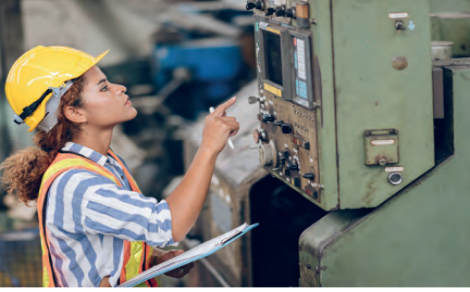Recent ONS figures place manufacturing vacancies at 84,000 between September and November 2022, a concerningly sharp incline from the relatively low position of 42,000 from the same period in 2020.
To combat the rise in manufacturing vacancies, the industry must increasingly look to attract and retain talent, yet research found that only one in three manufacturing professionals was female in 2020, with ONS statistics indicating a continued broad gender split where women made up less than a quarter of the manufacturing workforce in 2021.
As a result, leading manufacturing MSP has produced a new white paper on Women in Manufacturing, which reviews the industry’s shortcomings in attracting and retaining female talent, discovering it is a result of continued under-representation and concerning disparities found between genders from education to career.
This has led to training opportunities and career progression within the manufacturing industry being perceived as invisible, unequal, and ineffective, creating continued barriers to entry into a manufacturing career.
Neil Matthews, Managing Director, commented: “The manufacturing industry is an essential fixture in the UK economy, but this continued struggle to attract and retain talent is extremely concerning and damaging to the industry and its future.”
“Our new white paper examines the clear disparity in the progression and support of women in the manufacturing industry, which is by far not a new problem for the industry. Yet, it is more apparent than ever that we need to draw attention to this issue and employ effective solutions across the industry as a whole.”
Indeed, current broad-based programs and opportunities in place have not effectively been reaching the right people, nor have they been encouraging steady progression in gender equity and diversity within the sector.
Concerningly, this issue continued to be prominent in the 2022 A-Level results, with only 31.5% of females entered in for STEM subjects, and females accounting for 15% of starts in STEM apprenticeships in the 2020/2021 period.
Research by IBM found that only one in four organisations make the advancement of women a top 10 priority, despite also finding that organisations with gender parity as a strategy have a more successful business model and consistently outperform competitors in innovation, revenue growth, and customer and employee satisfaction.
This is supported by further research, which suggested that every 10% increase in gender diversity among organisations can lead to operating profit increasing by 3.5%.
Emily Smith, Senior Sales Engineer, continues, “Some organisations within the industry are taking the right steps to achieve gender parity and encourage equal training and progression opportunities. However, manufacturing sectors need to work together as a whole in order to make progressive change.”


